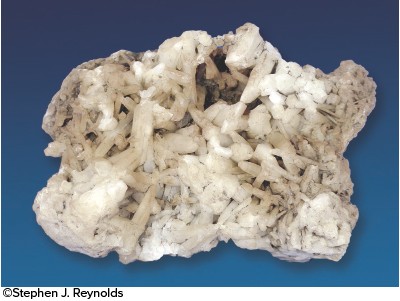Answer the following statement(s) true (T) or false (F)
1. The Atlas and Elburz mountains are part of the same geological system as the Himalayas.
2. The completion of the Aswan High Dam on the Nile River solved Egypt's water
problems.
3. Many of Northern Africa's modern cities surround enclaves of old trading and agricultural
centers
4. Fewer men than women in Northern Africa are illiterate.
5. Countries of Arab Southwest Asia trade extensively with each other
1. TRUE
2. FALSE
3. TRUE
4. TRUE
5. FALSE
You might also like to view...
From the list provided below, choose those observations that accurately describe the mineral presented in this image. 
A. This mineral has a metallic luster. B. This mineral does not have cleavage. C. This mineral flakes into thin sheets. D. This mineral effervesces with dilute HCl. E. None of these choices are correct.
A concentrated solar thermal power facility concentrates solar energy by ________
A) using photovoltaic panels to produce electricity B) collecting light in a series of fiber optic cables directed to underground steam rooms C) heating water in pipes that run along rows of mirrors D) using a large array of reflectors to direct sunlight to a collector
In the early twentieth century, what was the prevailing view among scientists of how land animals were able to travel from one continent to another?
a. Land animals that traveled between continents were also capable of swimming. b. Land animals that moved from continent to continent did so by hopping on stepping stones across the ocean. c. All continents had been connected together as a supercontinent. d. Some type of land connection allowed land animals to reach other continents. e. Land animals that moved from continent to continent did so by rafting on materials across the ocean.
The two most abundant gases in the atmosphere are
A) nitrogen and oxygen. B) water vapor and carbon dioxide. C) nitrogen and water vapor. D) oxygen and carbon dioxide.